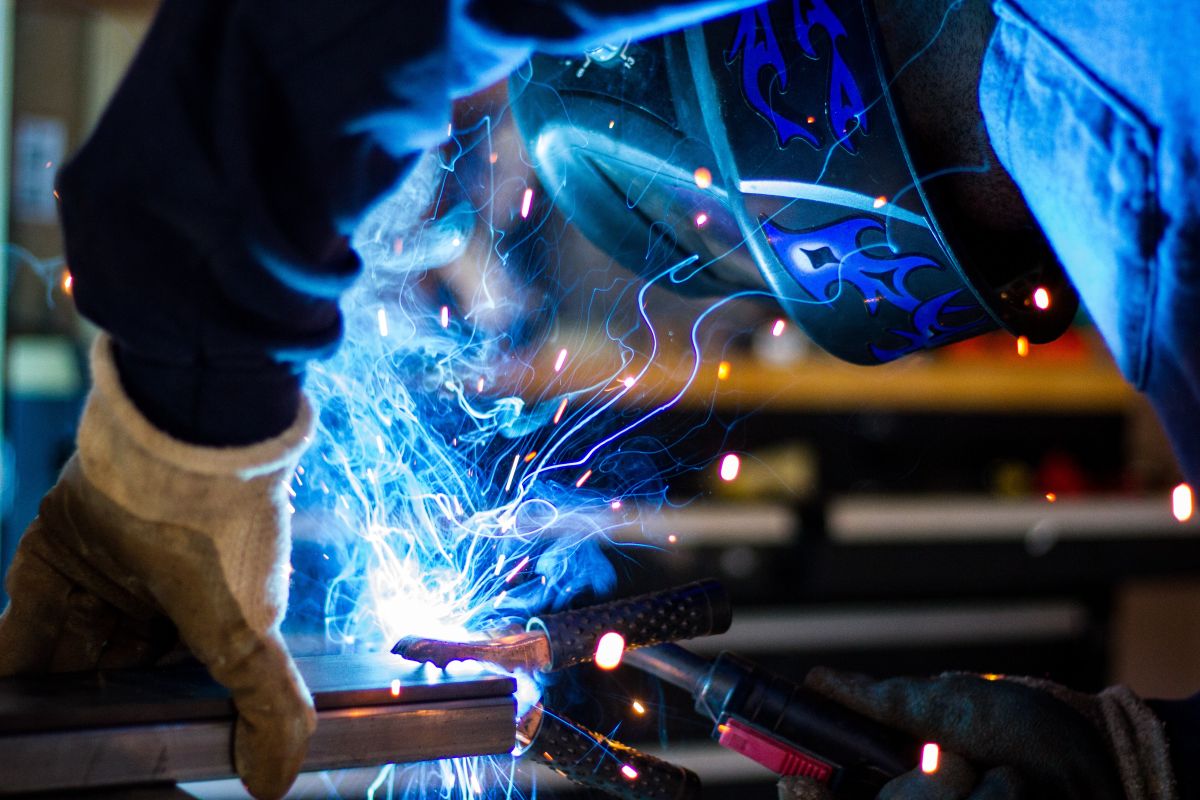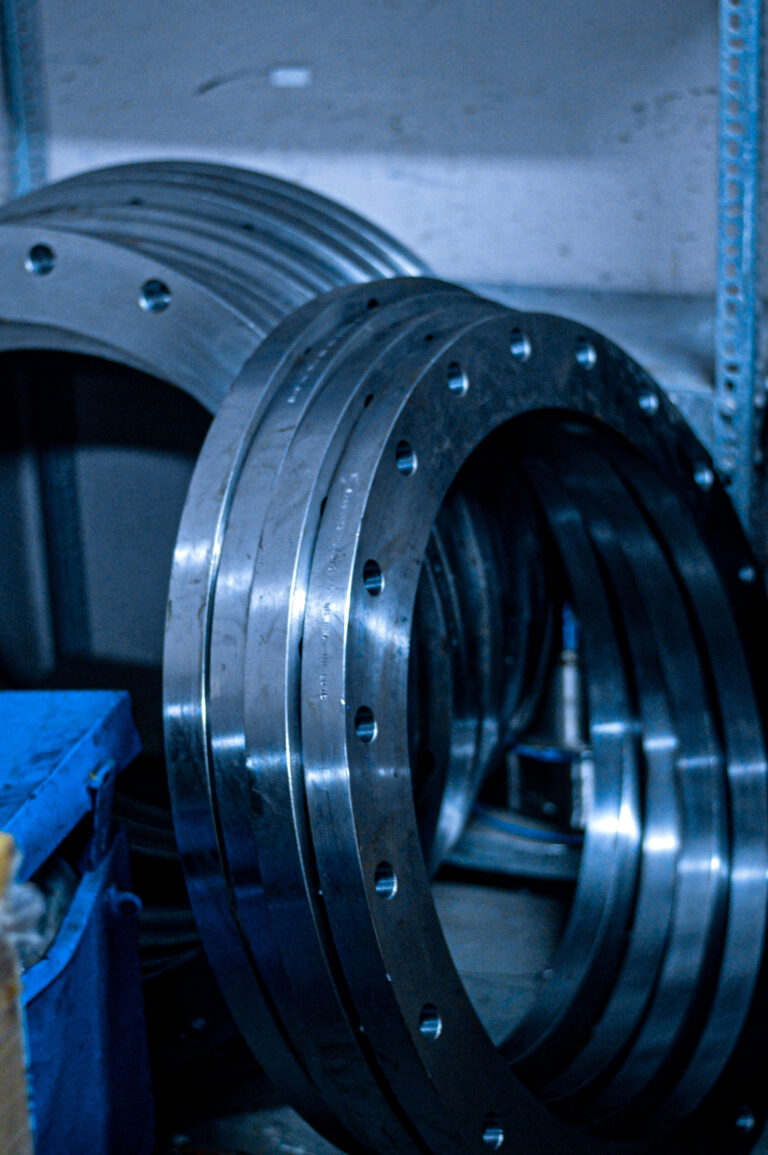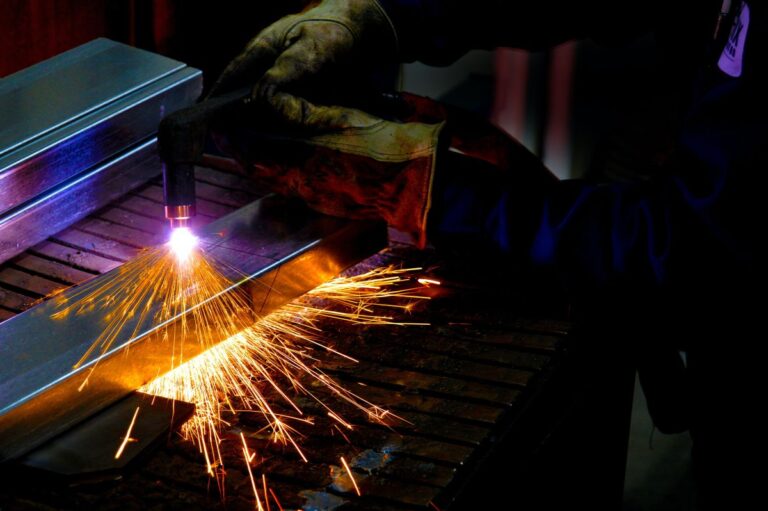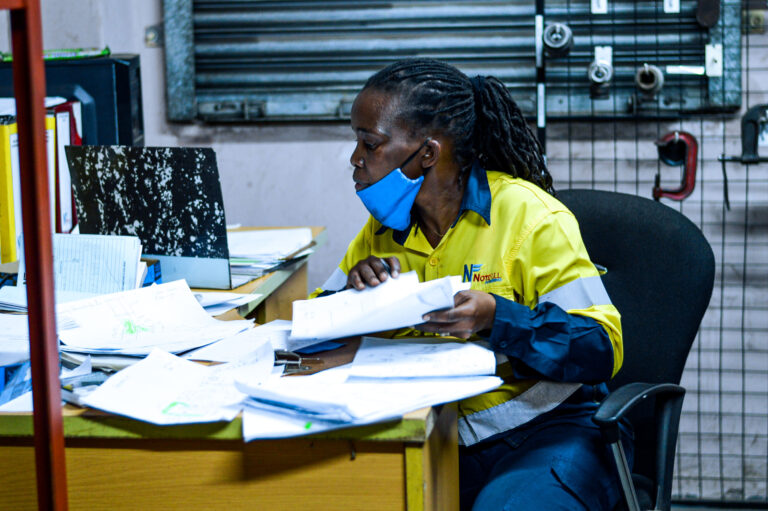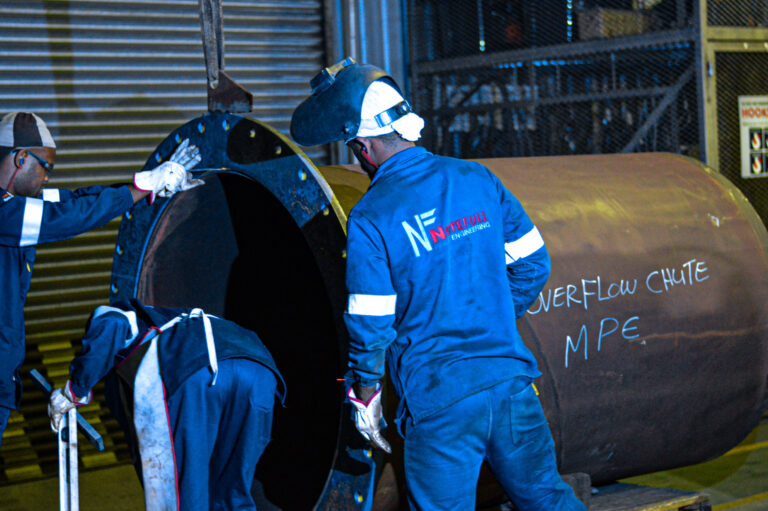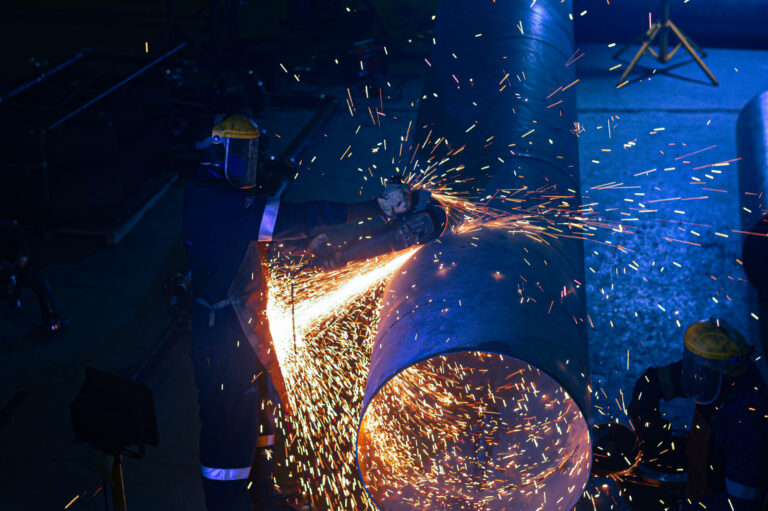UNDERSTANDING THE DIFFERENCE BETWEEN ALUMINIUM WELDING AND STEEL WELDING
The techniques and best practices for welding aluminium are very different from those of welding steel. Here are some common challenges with aluminium welding and how to address them.
ALUMINIUM WELDING VS STEEL WELDING
To start, more often than not, what you find is that welding aluminium requires the welder to follow some special procedures. In fact, a key aspect is selecting the right filler metal for the base material and the requirements for application.
The aluminium welding process tends to present some unique challenges in and of itself compared to welding steel or any other common materials, particularly in terms of the chemistry and the crack sensitivity. What you find is that in many cases, important factors play a role when welding the material, these include: selecting the accurate filler metal; proper storage and thorough cleaning of the base material: along with the expert welding techniques.
Below, we will go over some common challenges when welding aluminium and the key best practices for solving and addressing them.
CHARACTERISTICS OF ALUMINIUM AND ITS ALLOYS
When it comes to doing quality welding, it’s all about chemistry, reduction of hydrocarbons, and the proper technique. The interesting part is aluminium and steel differ in several different ways in their characteristics. To start, the melting point of steel is much higher compared to aluminium. Steel is approximately 2,500 degrees Fahrenheit which is much higher than aluminium’s 1,221 degrees. Though we touched on the melting point for each, aluminium’s oxide layer melts at approximately 3,700 degrees. That’s right, this oxide layer is more than 2x harder than the aluminium and helps the material resist corrosion and abrasion. However, it’s also important to note this acts as an insulator that can create issues during welding.
Unlike steel which becomes more brittle, the strength of aluminium tends to increase as service temperature decreases. Aluminium is commonly used in very cold temperature applications, this includes cryogenics and liquid natural gas transportation.
Aluminium materials are mainly composed of aluminium with additions of a variety of elements, this is different when compared to steel whose main alloy is iron.
Then you get wrought alloys like 1xxx series aluminium, which are pure aluminium with no alloying elements intentionally added. Within the principal alloying elements found in the other types of aluminium, there’s copper in 2xxx series, manganese within 3xxx, silicon in 4xxx, magnesium in 5xxx, magnesium as well as silicon in 6xxx, zinc in 7xxx, and other various elements in 8xxx series.
HOW DIFFICULT IS ALUMINIUM WELDING?
Within fabrication you’ll find that aluminium is in fact a commonly used type of metal. The reason behind this is its non-corrosive, pleasing to the eye and lightweight, all these factors make it an ideal choice for material in a wide variety of welds. However, it’s also important to note, these same characteristics that make aluminium desirable can also make it tricky to work with.
So what exactly makes aluminium so difficult to weld? It’s a soft material, very sensitive and is insulated by a tough oxidized layer. This means that whilst in its molten state, aluminium becomes susceptible to impurities, this can lead to porous (tiny holes or openings), weak welds.
Aluminium along with its alloys have a great affinity for oxygen. This means that pure aluminium melts at 1,200°F (650°C), what happens then is that the oxide that protects the metal melts only at 3,700°F (2,037°C) because the oxide melts at a temperature approximately 2,500°F (1,370°C) higher than the actual aluminium itself, the oxide needs to be cleaned from the metal before the actual welding can begin.
What’s important to note is since aluminium has a higher thermal conductivity and low melting point, it’ll have a smaller window of workability than your other metals and can easily lead to a burn through. This, as well as a combination of it being harder to indicate weld progress and quality, can and might make aluminium a challenging material to work with.
IN SUMMARY, HERE ARE SOME OF THE MOST COMMON FACTORS & CHALLENGES THAT MAKE ALUMINIUM DIFFICULT TO WELD:
Oxidation
You’ll find that on top of aluminium sits an aluminium oxide layer, this layer melts at a significantly higher temperature than that of the actual aluminium. To get through and melt this layer requires high heats, however the welder’s skills will be tested as they must be careful not to burn holes in the aluminium underneath.
Impurities
Aluminium is a very sensitive metal, with it there are several ways it can become contaminated by air, water and dirt during the welding process. The air can contaminate the aluminium by air that reaches the weld because of poor shielding or arcs that are excessively long. Oxygen can also play a role in reducing the aluminium’s strength, ductility (the ability of a metal to receive permanent deformation without fracturing) and result in oxide formation on the aluminium welds, this’ll affect its appearance and complicates multi-pass welding. The hydrogen can come from various different sources; this includes moisture within the electrode fluxes, damp weld joints, humid air and more. When all these reasons have been factored in, it’s important to ensure the aluminium has been cleaned thoroughly and stored correctly prior to the welding process.
Thickness
When welding aluminium it’s a process that involves working with a variety of different material thicknesses. Welders need the expertise and skill to be able to avoid burning through thinner material while also penetrating thick material enough to allow the creation of a strong weld.
Porousness
Within its molten state, what happens is aluminium will absorb hydrogen quicker the more it heats up. This will cause the hydrogen to separate out as the metal returns to a more solid form, which can result in bubbles in the material, causing the metal to become weaker and cause tiny holes (porous).
Whilst there are certainly obstacles and challenges when it comes to welding aluminium, you’ll find it’s not impossible to learn. Great news is there are tools and in fact techniques designed to help when working with aluminium’s very unique properties.
When you apply the knowledge of how aluminium reacts and the ways to effectively use those tools and techniques, you’ll be more than well on your way to mastering the art of aluminium welding, just like our team of experts at Notefull Engineering.
WHAT IS THE BEST WAY TO WELD ALUMINIUM?
When it comes to welding aluminium this is where it becomes interesting! It all boils down to choosing the right welding process. A lot of tools and methods are designed and tailored for welding steel, but aluminium requires its own techniques and equipment.
Before even touching or beginning the process of welding, the welder must clean thoroughly the aluminium. As mentioned prior, one of the difficulties with aluminium is that it is in fact prone to impurities. Therefore, it’s crucial to prepare the material correctly. Here are a few of those steps you can follow:
- Using acetone which is a solvent or even a mild alkaline solution like a strong soap to remove any oil, grease and water vapour from the aluminium’s surface.
- Using a stainless steel wire brush (remember to exclusively use it only for aluminium) to remove surface oxides. This can also be effectively done using a strong alkaline or acid. It’s important to ensure you rinse and fully dry the part before welding.
- It’s essential to assemble the joint and keep it covered if you won’t be welding it immediately. This will prevent dirt or even grit from contaminating the joint.
- Ensure at all times you keep your aluminium dry and stored within room temperature. It’s best to weld within a few days, and if it’s not, revisit and clean the joint again.
Safety plays a very critical role when it comes to welding aluminium, in fact, it applies to any material for that matter. It’s important to ensure number 1, you’re wearing the right PPE (Proper Protective Equipment) such as goggles, safety glasses, welding helmet with the appropriate lens shade number to protect your eyes, gloves and leathers to protect yourself from metal sparks and splatters, the right shoes to protect your feet and the proper fume ventilation to keep all the welding fumes away from the breathing zone.
TYPES OF ALUMINIUM WELDING
At this point, I’m sure you’re curious on how to go about welding aluminium. It’s important to note that there are various welding processes and techniques that can be used:
GTAW/TIG
Gas Tungsten Arc Welding (GTAW), also known as tungsten inert gas (TIG) welding, is definitely up there in regards to how popular it is when it pertains to welding processes, especially for aluminium. You’ll find most often this welding technique is used by automotive enthusiasts and even the welders for professional racing teams.
GTAW requires a very constant current equipment with AC (alternating current) capabilities using 100 percent argon as the shielding gas. It doesn’t require the mechanical wire feeding, which has been known to potentially create feed ability issues.
It’s important to note, rather the welder will feed the filler material into a puddle. This as a process is also very clean, as the alternating current cleans the oxidized layer off the aluminium as it is welded. It also will prevent the aluminium from being contaminated all throughout the process.
TIPS FOR GTAW/TIG WELDING:
It’s important to pick the most accurate tungsten electrode or rod, the most ideal choice for aluminium is typically a pure tungsten rod.
Take your time to prepare the aluminium by cleaning it and then also preheating it.
It’s crucial to ensure there isn’t too much argon flow at the torch, which can in fact cause an irregular arc to take place.
To prevent unwanted warping, use a heat sink.
When welding, keep the proper aluminium filler electrode or rod free of contaminants and melt it with the base material to create a constant welding puddle.
When you’re welding, keep the proper aluminium filler electrode or rod free of any and all contaminants. Also, ensure to melt it with the base material to create a constant welding puddle.
GMAW/MIG
Gas metal arc welding (GMAW), also known more commonly as metal inert gas (MIG) welding, is another popular method used for aluminium welding.
Typically, this type of welding has faster travel speeds and it has higher deposition rates than that of TIG welding, this tends to affect the weld quality. However, it does utilize a mechanical wire feeding system, this essentially means that the welder might have to use a spool gun or push-pull gun to make the wire feeding possible.
Additionally, in order to combat the risk of the aluminium being welded becoming porous, the base material and filler rod needs to be clean, moisture free and have excellent shielding gas coverage, typically this is pure argon content.
TIPS FOR MIG WELDING:
Before beginning, prepare your push-pull wire feed.
Always clean your aluminium, remove all the oxide and file the edges that will be joined.
It’s important to avoid pulling while welding, what you can do instead is push at a 10 degree to 15-degree angle.
You can use multiple pass straight beads, this will improve the overall appearance of the weld and assist with avoiding defects.
Utilize a heat sink, this will absorb any extra heat and allow you to weld slower.
ALUMINIUM WELDING NEAR ME
Notefull KZN, as a black female owned company with ISO: 3834, SAIW accreditation and BBBEE certification level 1, offers Aluminium Welding services for various industries and applications not only in Richards Bay but KwaZulu-Natal, and all of South Africa’s provinces. We pride ourselves on welding services of the highest quality standards. Our specialized welding service is renowned for its workmanship, and our facilities have a large range of procedures built up over many years. This enables us to undertake many critical tasks to suit almost every type of welding job.
We weld Aluminium, Steel & More, our welding team specialises in the welding of aluminium, stainless steel and of course mild steel (carbon steel). If you require welding or fabrication services on other specialised metals not mentioned here please don’t hesitate to contact us. Looking for aluminium welders near you? Our welding services are available for both businesses and individuals; no job is too big or too small! Start the journey of seeing affordable quality results today by getting the right service you need.

